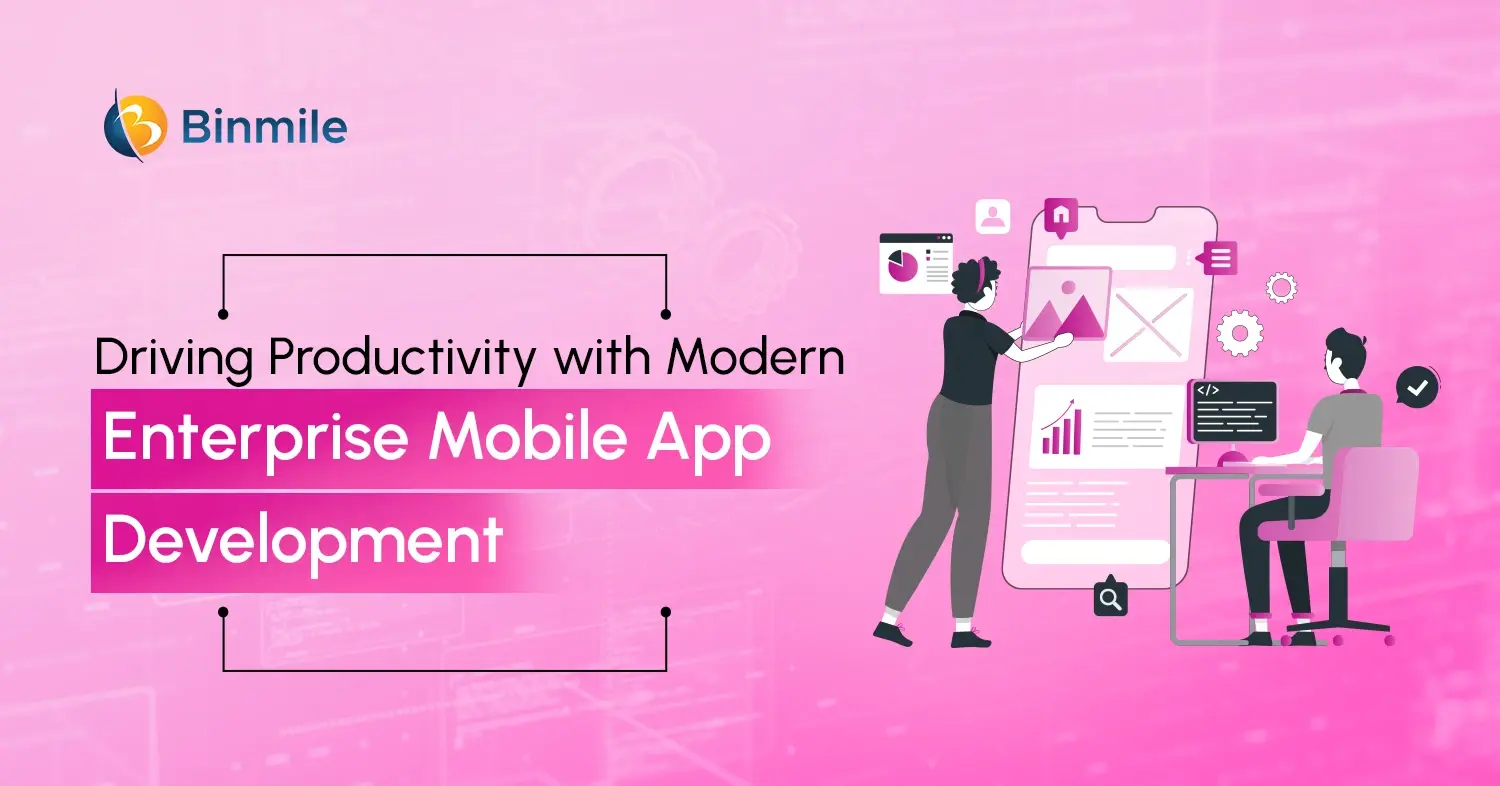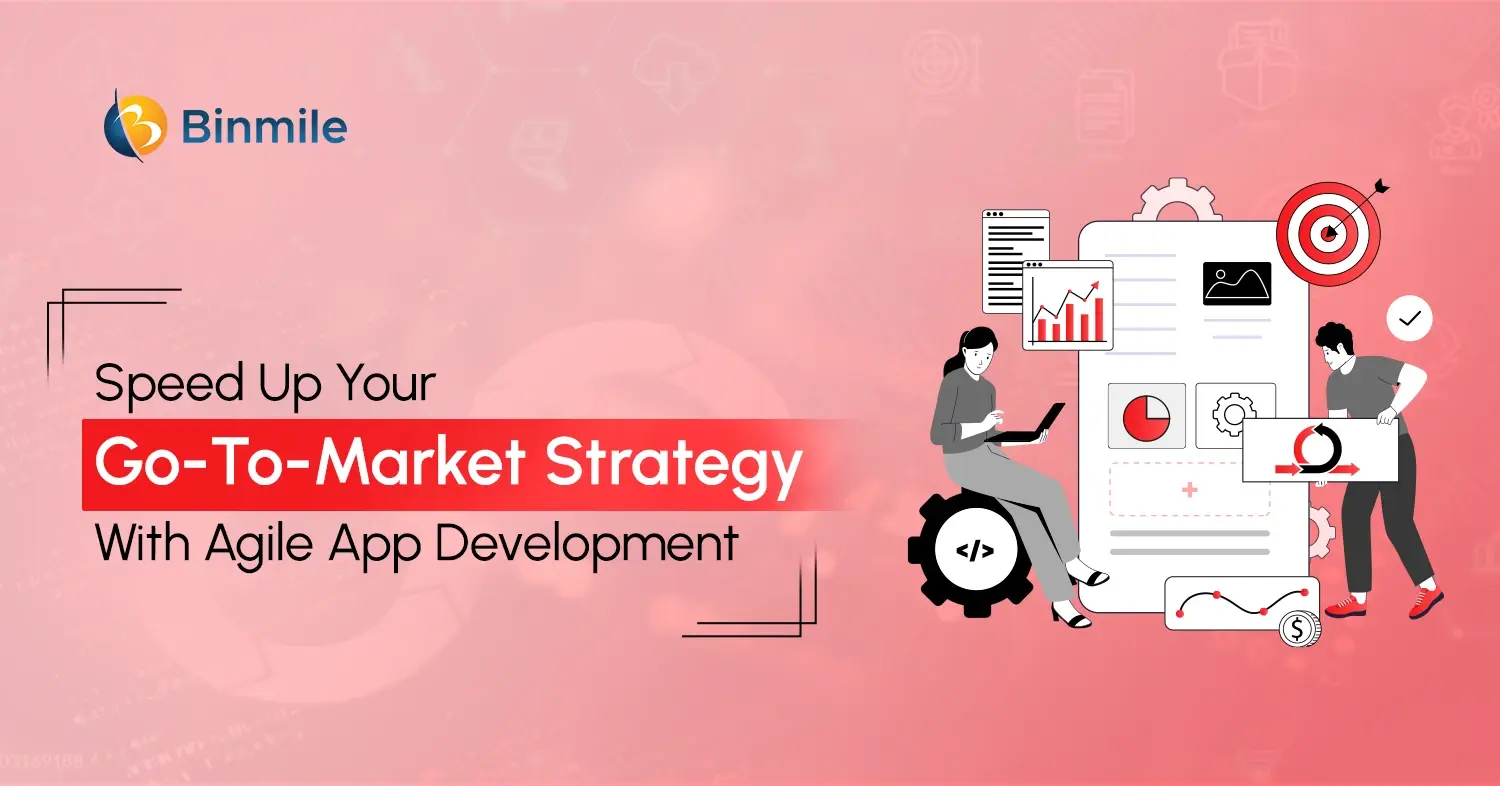With 70.7% of the world’s total population using a mobile phone, businesses can no longer avoid investing in mobile application development. Mobile applications offer a direct chain of communication between your company and its customers, helping you build stronger and more meaningful relationships. However, to fully realize its potential, you must have a deeper understanding of the app development process. Each stage – planning, wireframing, feasibility assessment, prototyping, design, development, testing, app deployment, and maintenance- plays a critical role in ensuring your digital product development meets user needs, functions smoothly, and stays relevant.
Without the knowledge of the phases of mobile app development, you risk inefficiencies, poor user experience, and missed growth opportunities. Therefore, in this blog, we will explore the seven stages of application development and provide a few tips on how to launch a mobile app, ensuring a successful and rewarding journey. We will also analyze factors affecting the app development cost and provide a few tips on how to find the right app development partner.
7 Phases of Mobile App Development Process
So, what to expect in app development? Well, app development processes have evolved from simple to complex, sophisticated, and systematic strategies. The modern mobile application development lifecycle consists of six crucial stages: Product Discovery, UX/UI app design, Project kick-off & setup, App development with quality assurance, App publishing, and the Post-development phase. So, let’s understand these phases of mobile app development in detail:

1. Product Discovery
Defining product vision is one of the first steps in an enterprise’s mobile app development roadmap. This step helps you understand your users, build a strong foundation for your MVP, and ultimately succeed in the market.
To start with, let’s define an idea that you want to bring into this world. Don’t think about features yet—make a list of things you want your users to achieve when they use your app. There are a few valuable tools that help you clarify your vision:
- Product canvas (product definition tool)
- Personas (identify who your users are and why they would need this app)
- Event storming (helps brainstorm the best possible product experience)
- Prioritization chart (prioritize the most crucial features of your app).
2. UX/UI App Design
Creating an app has never been easier, but ensuring it is intuitive, visually appealing, and user-friendly is more crucial than ever. A well-designed interface enhances user engagement and satisfaction. Employing a dedicated UX/UI design team ensures a seamless experience, guiding users effortlessly through your app while maintaining a polished and professional look.
- A visual representation of how users navigate through the app.
- Clickable prototypes outlining the app’s structure and functionality.
- The visual elements, including colors, typography, and layout, shape the user experience.
- Smooth interactions that make the app feel fluid and engaging.
3. Technical Architecture & Stack
Choosing the proper technical foundation is crucial. You’ll need to decide between a native approach, which offers better performance, and a cross-platform solution that speeds up development and reduces costs. Behind the scenes, a solid backend with scalable services and secure APIs will keep your app reliable and responsive.
- Evaluate the pros and cons of Native vs. Cross-Platform development based on performance, speed of delivery, and cost to choose a development process that is aligned with your product goals.
- Design scalable backend services with well-structured, secure APIs to support long-term growth and integration.
- Integrate security best practices and regulatory compliance from the start to minimize risk and build user trust.
4. Project Kick-off and Setup
As the project kicks off and you’re getting ready to start building your app, you need to ensure a smooth transition from planning to execution. It helps you align the team, define workflows, and prepare technical infrastructure. A well-structured kick-off sets the foundation for a successful development process, ensuring clarity and efficiency from the start.
- Establish clear responsibilities and communication channels.
- Configure repositories, frameworks, and tools for efficient collaboration.
- Define key deliverables, timelines, and expectations.
- Set guidelines for communication and reporting, discuss contingency plans, and define conflict resolution processes.
5. Quality Assurance & Testing
Moving away from traditional waterfall development to agile methodologies and integrating continuous integration (CI) enhances efficiency and ensures quality assurance at every stage. CI also offers real-time tracking, automated testing, and seamless app deployment, reducing errors and improving reliability. With a well-structured app testing process, you can deliver a high-quality, reliable, and scalable app while maintaining development agility.
- Adopt agile workflows and CI/CD pipelines to enable iterative development and continuous testing.
- Leverage automation for unit, integration, and regression testing to enhance speed and accuracy.
- Conduct a rigorous app testing process to ensure stability, scalability, and data protection.
- Continuously track app performance, fix bugs, and optimize based on user feedback and analytics.
6. App Publishing to Store
Publishing an app requires careful preparation to ensure a smooth launch. Make sure all features described in your app metadata are fully implemented and working as intended. So, how to launch a mobile app? Start by finalizing promotional materials, optimizing your product page, and securing approvals from the Google Play Store or Apple App Store.
- Ensure your product page is complete, visually appealing, and meets store guidelines.
- Select the right category and pricing strategy to maximize visibility and revenue.
- Schedule the launch, conduct beta testing (if applicable), and upload required assets.
- Promote your app through social media, email campaigns, and continuous product page updates.
7. Post-Development Phase
After the development phase is complete, your mobile app moves into post-development maintenance and further development, where ongoing maintenance and enhancements ensure long-term success. This stage focuses on performance monitoring, user feedback integration, and continuous improvements to keep the app relevant and competitive. If you want your product to remain successful over time, it needs constant improvement, and this phase is where you ensure that.
- Regularly track app performance, detect crashes, and resolve issues to maintain stability.
- Continuously gather user insights to refine functionality, add new features, and improve the experience.
- Ensure the app stays relevant by updating it for new operating systems and evolving market trends.
- Keep refining the product page, marketing strategies, and engagement efforts to sustain growth.
Ready to turn your app idea into a reality? Don’t just dream about your app; let our skilled team transform it into a market-ready masterpiece!

6 Factors That Influence Your Mobile App Development Cost
Did you know? The cost of app development in India is significantly lower compared to Western countries, ranging from $5,000 to $50,000 for basic mobile apps and depending on the app’s complexity, features, and technology stack. But a few more factors may impact your mobile app development cost, so let’s discuss them in detail:

| Factors | Estimated Cost |
|---|---|
| Complexity and Features | $15,000 to $300,000+ |
| Platform Choice | $25,000+, varies based on build |
| Custom UI/UX Design | $15,000 to $50,000 |
| Backend Infrastructure & API | $15,000 to $60,000+ |
| Testing & Quality Assurance | 10%–20% of the development cost |
| Maintenance & Support | 15%–20% of the initial cost annually |
1. Complexity and Features
This is the single most significant cost driver. The broader and deeper your feature set, the more effort, time, and specialization are required, directly influencing your development budget.
- Basic Apps (e.g., utilities, content display): $15,000 to $30,000
- Medium Complexity Apps (e.g., social features, e-commerce with basic workflows, appointment systems): $25,000 to $90,000
- High Complexity Apps (e.g., advanced social networking, real-time functionality, AI-driven features, complex business logic): $90,000 to $300,000+
2. Platform Choice (iOS, Android, or Both)
The decision to build for iOS, Android, or both will influence your architecture, timeline, and cost.
- Single Platform (iOS or Android): $15,000 to $30,000
- Cross-Platform (e.g., Flutter, React Native): Typically 1.2x to 1.8x the cost of a single-platform build due to additional testing and platform-specific customization. For example, if a basic iOS app costs $15,000, a cross-platform version might cost between $18,000 and $30,000, or more.
- Native for Both (iOS + Android): Expect 1.7x to 2.5x the cost of a single platform. You’re essentially building and maintaining two separate codebases.
3. Custom UI/UX Design
Design isn’t just aesthetics—it directly impacts usability and engagement. Custom design efforts vary depending on the complexity of the user flow, animations, and interactivity.
- Standard Design (templates and platform components): Minimal extra cost beyond development.
- Custom UI/UX (unique layout, flows, tailored brand design): $15,000 to 35,000, or more
- Advanced UI/UX (micro-interactions, animations, pixel-perfect polish): $20,000 to $80,000+
4. Backend Infrastructure and API Integration
Any dynamic app with data, user logins, or integrations will require backend infrastructure—this can be lightweight or enterprise-grade.
- Simple Backend (basic auth, simple data storage): $15,000 to $20,000+
- Complex Backend (real-time data sync, 3rd-party systems, scalability considerations): $25,000 to $60,000+
- Third-Party API Integrations: $200 to $2,000+, depending on API complexity and documentation
5. Testing and Quality Assurance
Thorough testing safeguards against performance and UX issues across devices and OS versions and prepares you for what to expect in app development or its challenges.
- Basic Testing: Generally included in development, but scales with feature count
- Comprehensive QA (performance, security, edge-case testing): Typically 10%–20% of the total development cost
- Automated Testing: Involves upfront setup (tools, frameworks, scripts) but can reduce regression testing time in the long term. Especially beneficial for large-scale apps
**Bonus Factor
6. Maintenance and Support
Development doesn’t end at launch. Ongoing investment in maintenance is essential for relevance, compatibility, and performance.
- Bug Fixes & OS Updates: Estimated at 15–20% of the initial development cost annually
- Security Patches: Usually bundled within ongoing maintenance agreements
- New Feature Enhancements: Variable: depends entirely on scope
- Technical Support: Cost depends on support tier (e.g., email-only, live chat, SLAs) and user base size
How to Choose the Right Mobile App Development Partner?
Selecting a partner to work with on your mobile application development project can be difficult. You must find a company that can work well with you and the product you want. While many options are available, it’s essential to do your research and choose carefully. Once you have filtered your preferences to a few top app development companies, make sure to sign an Independent Contractor Agreement before working with them so that everyone is on the same page about expectations. Other steps to follow are:
- Establish precise objectives, timelines, and deliverables to align expectations.
- Agree on collaboration tools, reporting frequency, and feedback loops for seamless coordination.
- Confirm that the developer understands your app’s technical requirements, design vision, and scalability needs.
- Outline a structured QA process, including automated and manual testing, to maintain high performance.
- Discuss maintenance, updates, and long-term support to ensure ongoing app success.
Get measurable results: our proven app solutions deliver ROI. Launch your app and grow your business today.

Key Takeaways from the Mobile App Development Process
Mobile app development in 2025 is no longer about just delivering functional software. It’s also about providing a secure, seamless, and intelligent experience across devices, which requires more than just technical execution. With AI, cloud-native tools, and cross-platform frameworks reshaping the landscape, businesses need solutions that are fast, scalable, and user-focused. This is why understanding the mobile app development process and each stage is crucial to drive engagement, optimize operations, and embrace new revenue streams.
Poor performance or subpar UX can quickly lead to app abandonment and brand damage. To avoid that, it’s essential to combine technical precision with market insight and a clear understanding of user needs. If aligning these elements in-house feels daunting, partnering with a mobile app development company can offer the clarity and expertise needed to move forward with confidence.
Start with a free consultation and discover how we can turn your vision into a reliable, high-impact mobile solution.
Frequently Asked Questions
There are several approaches to app development, including:
- Native App Development: Building apps natively for specific platforms (e.g., iOS, Android) using platform-specific programming languages (e.g., Swift for iOS, Java/Kotlin for Android).
- Cross-Platform Development: Developing apps that can run on multiple platforms using a single codebase, often leveraging frameworks like React Native, Flutter, or Xamarin.
- Progressive Web App (PWA) Development: Creating web applications that offer native app-like experiences and can be accessed through web browsers on mobile and desktop devices.
- Hybrid App Development: Combining web technologies (HTML, CSS, JavaScript) with native components to create apps that can be deployed across multiple platforms.
Challenges in mobile app development may include:
- Platform Fragmentation: Ensuring compatibility and consistency across different devices, screen sizes, and operating system versions.
- User Experience (UX) Design: Designing intuitive and user-friendly interfaces that provide seamless navigation and usability across various devices and user preferences.
- Performance Optimization: Optimizing app performance, responsiveness, and load times to deliver a smooth and responsive user experience.
- Security Concerns: Addressing security vulnerabilities, protecting user data, and implementing robust security measures to prevent unauthorized access, data breaches, and cyberattacks.
- Resource Constraints: Managing project scope, budget, and timeline constraints while delivering high-quality apps that meet business requirements and user expectations.
Challenges encountered during the app development stages may include:
- Tight deadlines and resource constraints
- Platform fragmentation and compatibility issues
- User interface (UI) and user experience (UX) design challenges
- Performance optimization and scalability concerns
- Security vulnerabilities and data privacy risks
- Communication and collaboration issues among cross-functional teams
The app development process includes seven key steps: idea generation, planning, UX/UI design, development (frontend, backend, and APIs), testing, launch, and post-launch maintenance. It begins with identifying the app’s purpose and target audience, followed by planning the features, tech stack, and timelines. Designers then create intuitive user interfaces, while developers build the app’s functionality. After rigorous testing to ensure performance and reliability, the app is launched on relevant platforms. Ongoing support, updates, and user feedback integration follow to keep the app efficient and up to date.
To ensure your app gains visibility after launch, start with App Store Optimization (ASO) by using relevant keywords, an engaging description, and compelling visuals. Promote your app through social media marketing, influencer outreach, press releases, and email campaigns. Encourage early users to leave positive reviews and ratings, which boost app rankings. You can also run paid ads on platforms like Google, Facebook, or Instagram to reach a broader audience. Lastly, keep your app updated and responsive to user feedback to maintain engagement and visibility over time.
While every stage plays a critical role, the planning and strategy phase is often the most important. This is where the app’s goals, target audience, core features, and technology stack are defined. A well-thought-out plan sets the foundation for design, development, and scalability. Without clear application development guidelines, even the best design or code may fail to meet user needs or business objectives. Solid planning helps avoid costly revisions later and ensures a smooth, goal-driven development process.









